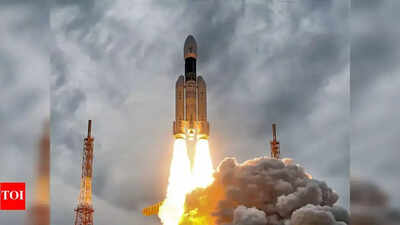Space exploration stands on the cusp of a transformative era, with an impressive array of missions scheduled to launch in 2025 and beyond. These endeavors promise to significantly enhance our understanding of the Moon, Mars, and the vast expanse beyond. Spearheaded by leading space agencies like NASA, ISRO, ESA, and JAXA, as well as private sector pioneers, these missions aim to propel scientific knowledge forward and pave the way for future human exploration and groundbreaking technological advancements. From crewed missions orbiting the Moon to robotic explorers venturing to distant celestial bodies, here are ten of the most compelling space missions to anticipate in the coming years.

Launch Date: 2026
Destination: Moon
Objective: To deliver scientific instruments and rovers to the lunar surface, facilitating studies of lunar geology and the testing of technologies crucial for upcoming Artemis missions.
Overview: The IM-3 mission plays a vital role in NASA's Commercial Lunar Payload Services (CLPS) program, an initiative focused on establishing a sustainable human presence on the Moon. This mission will deploy advanced instruments to meticulously analyze the lunar terrain, including rovers designed to traverse and investigate its geological features. Beyond scientific objectives, IM-3 will rigorously test innovative landing technologies and autonomous systems that are indispensable for future crewed Artemis missions, thereby enhancing confidence in commercial partnerships supporting lunar exploration.
Launch Date: December 2025
Destination: Mars Orbit
Objective: To investigate Mars' plasma environment and magnetic fields, seeking to understand the processes behind atmospheric loss.
Overview: ESCAPADE comprises two compact satellites, known as "Blue" and "Gold," which will orbit Mars at varying altitudes. This configuration will enable a comprehensive analysis of how solar wind erodes the Martian atmosphere. This investigation is crucial to understanding why Mars transitioned from a potentially habitable planet, abundant with atmosphere and surface water, to the arid desert observed today. The mission's data will refine models of planetary atmospheres and provide insights into Mars' past habitability.
Launch Date: 2025
Destination: Earth Orbit
Objective: To monitor changes on Earth's surface with exceptional precision, focusing on natural disasters and environmental shifts.
Overview: NISAR represents a collaborative effort between NASA and ISRO, featuring dual-frequency radar capable of penetrating cloud cover and darkness. This technology will enable the creation of detailed maps of Earth's surface, tracking land deformation caused by seismic events and volcanic activity, monitoring deforestation rates, and measuring the dynamics of ice sheets. This mission will supply timely data to enhance disaster response strategies and deepen our understanding of the impacts of climate change, rendering it an invaluable resource for scientists and policymakers worldwide.
Launch Date: April 2026
Destination: Lunar Orbit
Objective: To execute the first crewed mission of the Artemis program, rigorously testing spacecraft systems in lunar orbit.
Overview: Artemis II signals NASA's return to crewed lunar missions after decades of hiatus. Four astronauts will orbit the Moon aboard the Orion spacecraft, propelled by the powerful Space Launch System (SLS). This ten-day mission will evaluate the performance of life support, navigation, and communication systems in the deep space environment, ensuring operational readiness for the subsequent Artemis III landing mission. Artemis II marks a pivotal stride toward establishing a sustained human presence on the Moon.
Launch Date: 2025 (Test Flights)
Destination: Low Earth Orbit
Objective: To validate the safety, life support capabilities, and avionics systems critical for India's inaugural crewed spaceflight.
Overview: Gaganyaan-2 is an integral component of India's ambitious human spaceflight program. These uncrewed test flights will thoroughly assess the spacecraft's vital systems, including environmental controls and emergency procedures. These evaluations are paramount to ensuring astronaut safety for the planned Gaganyaan-3 mission. Success in this endeavor will position India among the select few nations capable of independently launching humans into space, representing a momentous achievement in its spacefaring capabilities.
Launch Date: July 2028
Destination: Titan (Saturn’s Moon)
Objective: To explore the organic-rich surface of Titan and investigate prebiotic chemistry.
Overview: Dragonfly is an innovative rotorcraft lander meticulously engineered to traverse Titan's diverse and complex terrain. Titan's dense atmosphere and abundance of organic molecules make it a prime location to study prebiotic chemistry and the potential for life beyond Earth. Dragonfly will analyze surface composition, weather patterns, and chemical processes, offering unprecedented insights into the formation of life's fundamental building blocks in environments markedly different from our own.
Launch Date: September 2026
Destination: Phobos (Mars’ Moon)
Objective: To explore the moons of Mars and retrieve samples from Phobos for return to Earth.
Overview: JAXA's MMX mission seeks to resolve the enigma surrounding the origins of Mars' moons by collecting samples from Phobos and returning them to Earth. The mission will also conduct detailed observations of Deimos. Determining whether these moons are captured asteroids or formed from Mars itself will provide valuable insights into the history of the Martian system and the early solar system. The sample return represents a complex undertaking that will yield invaluable material for laboratory analysis on Earth.
Launch Date: 2027
Destination: Low Earth Orbit
Objective: To conduct reusable microgravity experiments in orbit.
Overview: ESA’s Space Rider is a reusable, autonomous spaceplane designed to carry payloads for scientific and technological experiments in microgravity. It will enable longer-duration studies on biological processes, materials science, and plant growth, helping researchers understand how space conditions affect various systems. Its reusability lowers costs and increases access to space for European researchers and industry.
Launch Date: April 2025
Destination: Earth Orbit
Objective: To conduct an all-sky infrared survey to study galaxy evolution, cosmic inflation, and dark energy.
Overview: SPHEREx will map the entire sky in infrared light, providing a wealth of data about the universe’s structure and history. It will investigate the origins of galaxies, measure cosmic inflation’s fingerprints, and explore the mysterious dark energy driving the universe’s accelerated expansion. This mission promises to answer fundamental questions about the cosmos with a new level of precision.
Launch Date: 2028
Destination: Venus
Objective: To map Venus’ surface geology to understand its tectonics and volcanic history.
Overview: VERITAS will produce high-resolution maps of Venus’ surface using radar to penetrate its thick clouds. By studying Venus’ tectonic activity and volcanic processes, the mission seeks to explain why Venus evolved so differently from Earth despite their similar size and composition. VERITAS will also help assess Venus’ potential for past habitability and provide context for comparative planetology.
These missions represent the forefront of space exploration, integrating human spaceflight, robotic exploration, and Earth observation to broaden our understanding of the solar system and our planet. As they commence and progress over the coming decade, they are poised to spark new discoveries and redefine humanity’s place in the cosmos.
Newer articles
 Daren Sammy Fined, Handed Demerit Point for Umpire Criticism After Test Match Comments
Daren Sammy Fined, Handed Demerit Point for Umpire Criticism After Test Match Comments
 Gavaskar Calls for Yadav's Inclusion, Questions Middle Order After India's Test Defeat
Gavaskar Calls for Yadav's Inclusion, Questions Middle Order After India's Test Defeat
 Decoding Your Health: Spotting 5 Prediabetes Warning Signs Before a Blood Test
Decoding Your Health: Spotting 5 Prediabetes Warning Signs Before a Blood Test
 X Corp. Cracks Down: Half a Million Indian Accounts Suspended for Policy Breaches
X Corp. Cracks Down: Half a Million Indian Accounts Suspended for Policy Breaches
 Headline:
Early Warning Signs: 5 Heart Attack Symptoms to Watch Out For Weeks in Advance
Headline:
Early Warning Signs: 5 Heart Attack Symptoms to Watch Out For Weeks in Advance
 Facial Icing: Benefits, Risks, and Safe Application of This Viral Beauty Trend
Facial Icing: Benefits, Risks, and Safe Application of This Viral Beauty Trend
 Chess Sensation Praggnanandhaa Joins Magnus Carlsen's Team Liquid for Esports World Cup
Chess Sensation Praggnanandhaa Joins Magnus Carlsen's Team Liquid for Esports World Cup
 Mastering JPG to PDF Conversion: A Graphic Designer's Guide to Quality and Efficiency
Mastering JPG to PDF Conversion: A Graphic Designer's Guide to Quality and Efficiency
 MI New York's Tajinder Dhillon Shines: From IPL Benchwarmer to MLC Star
MI New York's Tajinder Dhillon Shines: From IPL Benchwarmer to MLC Star
 Akmal Blasts PCB's Interim Coach Choice: Ex-Cricketer Questions Logic Behind Mahmood Appointment
Akmal Blasts PCB's Interim Coach Choice: Ex-Cricketer Questions Logic Behind Mahmood Appointment